Description
1) According to the text, psychology is the scientific study of
a. human and animal behaviour.
b. thought, perception and emotion.
c. conscious and unconscious processes.
d. behaviour and mental processes.
Correct: Psychology is the scientific study of behaviour and mental processes. The other responses are too narrow in scope.
Answer: d
Diff: 1
Type: MC
Page Reference: 4
Topic: Factual
Objective: 1.1 Define psychology.
2) An understanding of any behaviour or mental process usually begins with
a. influence.
b. explanation.
c. prediction.
d. description.
Correct: Psychological research typically begins by establishing common descriptors of specific behaviours or mental processes. The remaining three goals usually follow description.
Answer: d
Diff: 2
Type: MC
Page Reference: 5
Topic: Factual
Objective: 1.2 Identify and explain psychology’s four primary goals.
3) When researchers can specify the conditions under which a behaviour or event is likely to occur, they have accomplished the goal of
a. explanation.
b. influence.
c. description.
d. prediction.
Correct: Once research has established the description and explanation (that is, identified causes) of a behaviour, it is then possible to determine patterns of predictability.
Answer: d
Diff: 2
Type: MC
Page Reference: 5
Topic: Conceptual
Objective: 1.2 Identify and explain psychology’s four primary goals.
4) Understanding the conditions under which a given behaviour occurs enables researchers to state the causes of the behaviour. This is a requirement of the goal of
a. influence.
b. description.
c. prediction.
d. explanation.
Correct: Identifying causes of behaviour is part of the process of explanation.
Answer: d
Diff: 2
Type: MC
Page Reference: 5
Topic: Conceptual
Objective: 1.2 Identify and explain psychology’s four primary goals.
5) When researchers have learned how to apply a principle or change a condition in order to prevent unwanted occurrences, they have met the fundamental goal of
a. description.
b. influence.
Correct: Changing and preventing behaviours form part of the process of influence or control.
c. prediction.
d. explanation.
Answer: b
Diff: 2
Type: MC
Page Reference: 5
Topic: Conceptual
Objective: 1.2 Identify and explain psychology’s four primary goals.
6) Which of the following best reflects psychology’s goal of influence?
a. Researchers have examined hundreds of cases of dissociative identity disorder (multiple personality) in order to provide a clear picture of the disorder.
b. Researchers have studied how smoking habits develop so that they may develop techniques to prevent teenagers from starting the habit.
Correct: Preventing behaviours is part of the process of influence or control.
c. Researchers have developed a test that shows which individuals are likely to develop Alzheimer’s disease.
d. Researchers have identified a gene involved in many cases of obesity.
Answer: b
Diff: 2
Type: MC
Page Reference: 5
Topic: Applied
Objective: 1.2 Identify and explain psychology’s four primary goals.
7) Which of the following best reflects psychology’s goal of explanation?
a. Researchers have developed a test that shows which individuals are likely to develop Alzheimer’s disease.
b. Researchers have studied how smoking habits develop so that they may develop techniques to prevent teenagers from starting the habit.
c. Researchers have identified a gene involved in many cases of obesity.
Correct: Identifying a gene addresses the root cause, or explanation, for a behaviour or condition.
d. Researchers have examined hundreds of cases of dissociative identity disorder (multiple personality) in order to provide a clear picture of the disorder.
Answer: c
Diff: 2
Type: MC
Page Reference: 5
Topic: Applied
Objective: 1.2 Identify and explain psychology’s four primary goals.
8) Which of the following best reflects psychology’s goal of prediction?
a. Researchers have developed a test that shows which individuals are likely to develop Alzheimer’s disease.
Correct: The development of a test, through research, leads to the prediction of the likelihood of the occurrence of a condition or, in this instance, a disease.
b. Researchers have examined hundreds of cases of dissociative identity disorder (multiple personality) in order to provide a clear picture of the disorder.
c. Researchers have studied how smoking habits develop so that they may develop techniques to prevent teenagers from starting the habit.
d. Researchers have identified a gene involved in many cases of obesity.
Answer: a
Diff: 2
Type: MC
Page Reference: 5
Topic: Applied
Objective: 1.2 Identify and explain psychology’s four primary goals.
9) Which of the following best reflects psychology’s goal of description?
a. Researchers have studied how smoking habits develop so that they may develop techniques to prevent teenagers from starting the habit.
b. Researchers have developed a test that shows which individuals are likely to develop Alzheimer’s disease.
c. Researchers have examined hundreds of cases of dissociative identity disorder (multiple personality) in order to provide a clear picture of the disorder.
Correct: In this case, data has been gathered to provide information or description of a condition that was previously less understood.
d. Researchers have identified a gene involved in many cases of obesity.
Answer: c
Diff: 2
Type: MC
Page Reference: 5
Topic: Applied
Objective: 1.2 Identify and explain psychology’s four primary goals.
10) The goals of psychology as a science are to
a. understand human and animal behaviour fully.
b. study and control human behaviour.
c. compare analyze and control behaviour and mental processes.
d. describe, explain, predict and influence behaviour and mental processes.
Correct: The four goals of psychology are to describe, explain, predict, and influence behaviour. The other responses are too narrow in scope.
Answer: d
Diff: 2
Type: MC
Page Reference: 5
Topic: Factual
Objective: 1.2 Identify and explain psychology’s four primary goals.
11) According to the text, which of the following is not a major goal of psychology?
a. Describing and explaining behaviour
b. Predicting behaviour
c. Influencing behaviour
d. Comparing human and animal behaviour
Correct: Comparing behaviours is one small part of description and therefore does not constitute one of the major goals of psychology.
Answer: d
Diff: 3
Type: MC
Page Reference: 5
Topic: Factual
Objective: 1.2 Identify and explain psychology’s four primary goals.
12) According to the text, which of the following is not a major goal of psychology?
a. Reconstruction
Correct: The four goals of psychology are description, explanation, prediction and influence.
b. Influence
c. Prediction
d. Description
Answer: a
Diff: 3
Type: MC
Page Reference: 5
Topic: Factual
Objective: 1.2 Identify and explain psychology’s four primary goals.
13) When a researcher utilizes a general principle or set of principles to explain how a number of separate facts are related to one another, the researcher is using
a. a theory.
Correct: A theory is a general principle or set of principles that links facts together.
b. basic research.
c. a hypothesis.
d. applied research.
Answer: a
Diff: 2
Type: MC
Page Reference: 5
Topic: Conceptual
Objective: 1.3 Explain what a theory is.
14) A theory enables researchers to
a. find the right interpretation for the data they collect.
b. describe several alternatives for what they observe.
c. explain what they were not able to find proof of.
d. fit many separate facts into a larger framework.
Correct: The concept of a “larger framework” is similar to a guiding principle or set of principles—or, in other words, a theory.
Answer: d
Diff: 1
Type: MC
Page Reference: 5
Topic: Conceptual
Objective: 1.3 Explain what a theory is.
15) According to the text, which of the following is not a goal of basic research?
a. Solving specific problems
Correct: Solving problems is part of the process of controlling or influencing behaviour, which falls under the larger umbrella of applied research.
b. Advancing our general scientific understanding
c. Pursuing knowledge for its own sake
d. Seeking new knowledge
Answer: a
Diff: 2
Type: MC
Page Reference: 6
Topic: Conceptual
Objective: 1.4 Compare and contrast basic and applied research.
16) According to the text, which of the following is not a goal of applied research?
a. Solving specific problems
b. Applying new knowledge to problems in the real world
c. Advancing our general scientific understanding
Correct: This is an example of explanation, which is part of basic research.
d. Improving the quality of life
Answer: c
Diff: 2
Type: MC
Page Reference: 6
Topic: Conceptual
Objective: 1.4 Compare and contrast basic and applied research.
17) According to the text, research that is conducted in order to find solutions to specific problems is called
a. controlled research.
b. basic research.
c. pure research.
d. applied research.
Correct: Applied research is that which seeks to improve the quality of life, or provide answers to real world problems.
Answer: d
Diff: 1
Type: MC
Page Reference: 6
Topic: Factual
Objective: 1.4 Compare and contrast basic and applied research.
18) Dr. Sherkus conducts a study concerning the emotional reaction of people when they first receive the news they have diabetes. The purpose of the research is to help people to adjust quickly and positively to their situation. This type of research would be
a. basic.
b. standard.
c. theoretical.
d. applied.
Correct: Helping people adjust emotionally is a partial solution to a real world problem, which is part of applied research.
Answer: d
Diff: 3
Type: MC
Page Reference: 6
Topic: Applied
Objective: 1.4 Compare and contrast basic and applied research.
19) When a study is conducted for the purpose of solving practical problems, the research would be described as
a. a theory.
b. applied research.
Correct: The goal of applied research is to improve quality of life or provide answers to real world problems.
c. basic research.
d. a hypothesis.
Answer: b
Diff: 2
Type: MC
Page Reference: 6
Topic: Conceptual
Objective: 1.5 Identify and compare the several types of descriptive research methods.
20) When a study is conducted for the purpose of finding new knowledge or advancing scientific understanding, the research would be described as
a. a hypothesis.
b. a theory.
c. basic research.
Correct: Basic research seeks to advance our understanding of behaviour and/or mental processes.
d. applied research.
Answer: c
Diff: 2
Type: MC
Page Reference: 6
Topic: Factual
Objective: 1.4 Compare and contrast basic and applied research.
21) ________ is to general scientific understanding as ________ is to practical problems.
a. Applied research; basic research
b. Basic research; applied research
Correct: Basic research attempts to add to our understanding of behavioural and mental processes, while applied research attempts to help solve problems.
c. Hypothesis; theory
d. Theory; hypothesis
Answer: b
Diff: 2
Type: MC
Page Reference: 5-6
Topic: Conceptual
Objective: 1.4 Compare and contrast basic and applied research.
22) Descriptive research methods
a. yield descriptions of behaviour.
Correct: Descriptive research methods seek to add to our understanding of the “what” of behaviour or mental processes.
b. do not occur in the laboratory.
c. include the experimental method and correlational methods.
d. identify causes of behaviour.
Answer: a
Diff: 2
Type: MC
Page Reference: 6
Topic: Factual
Objective: 1.5 Identify and compare the several types of descriptive research methods.
23) Naturalistic observation, laboratory observation, the case study method, and survey research share which of the following features?
a. They are only used in basic research situations.
b. None are successful in helping us understand behaviour.
c. They all find the causal reasons for why behaviours occur.
d. They describe rather than identify causes of behaviour.
Correct: All of the listed processes are part of descriptive research methods; they describe, rather than explain behaviour.
Answer: d
Diff: 2
Type: MC
Page Reference: 6/7
Topic: Conceptual
Objective: 1.4 Compare and contrast basic and applied research.
24) Which of the following statements is not true of naturalistic observation?
a. Researchers using this method attempt to influence the behaviour being observed.
Correct: Naturalistic observation seeks only to describe, not to control or influence behaviours.
b. This method allows the study of some phenomena that cannot be studied experimentally for ethical reasons.
c. Subjects may or may not know that they are being observed.
d. Behaviour studied in this way is usually more natural than behaviour studied under laboratory conditions.
Answer: a
Diff: 2
Type: MC
Page Reference: 7
Topic: Factual
Objective: 1.6 Compare and contrast naturalistic and laboratory observations, including their advantages and limitations.
25) Which of the following is not an advantage of naturalistic observation?
a. It can allow researchers to reach conclusions about cause-and-effect relationships.
Correct: Naturalistic observation only describes; cause and effect are determined by the experimental method. Naturalistic observation is not typically part of the experimental method.
b. It provides a good source of descriptive information.
c. It can provide the basis for a hypothesis to be tested later.
d. It is useful in studying the behaviour patterns of animals in the wild.
Answer: a
Diff: 2
Type: MC
Page Reference: 7
Topic: Conceptual
Objective: 1.6 Compare and contrast naturalistic and laboratory observations, including their advantages and limitations.

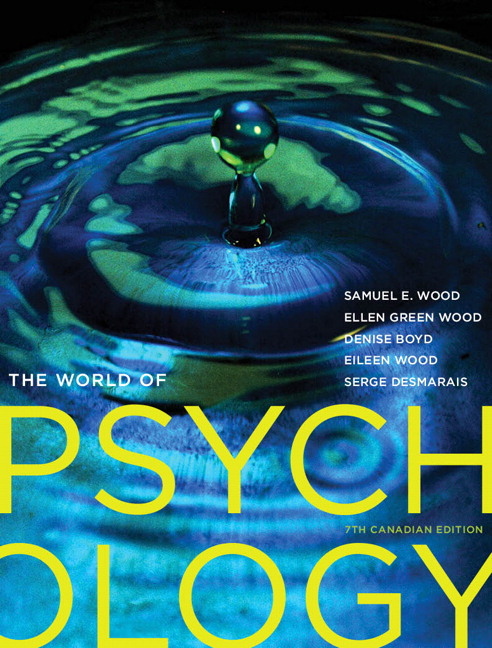
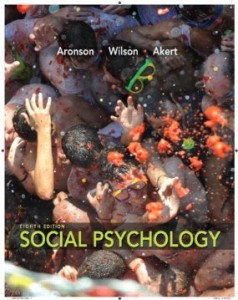
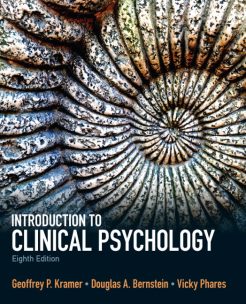
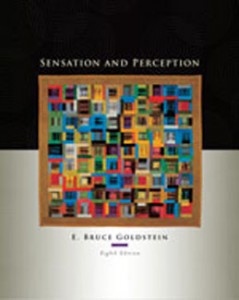
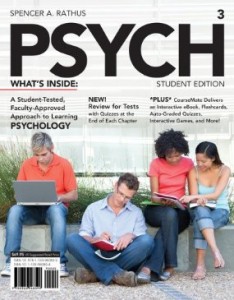

Reviews
There are no reviews yet.